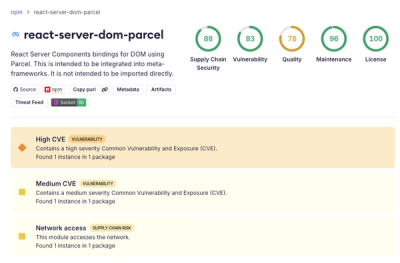pytreebuilder
Table of Contents
Module Structure Description
Description of Directories and Files
-
examples/ : Contains example scripts demonstrating how to use the pytreebuilder module.
- any_project_tree.py : Script to create a simple project structure based on
trees/any_project_tree.txt.
- complex_tree.py : Script to create a complex project structure based on
trees/complex_tree.txt.
-
logs/ : Directory for log files generated by the pytreebuilder module.
- pytreebuilder.log : Log file recording the actions performed by the
pytreebuilder module.
-
tests/ : Contains unit tests for the pytreebuilder module.
- init.py : Initialization file for the tests package.
- test_pytreebuilder.py : Unit tests for the
pytreebuilder module.
-
pytreebuilder/ : Core module directory containing the main functionality.
- init.py : Initialization file for the
pytreebuilder package.
- pytreebuilder.py : Main script containing the
PyTreeBuilder class and its methods.
- version.py : Contains the name and version of the
pytreebuilder project.
-
trees/ : Directory containing project structure description files.
- any_project_tree.txt : Description file for a simple project structure.
- complex_tree.txt : Description file for a complex project structure.
-
.gitignore : Specifies files and directories to be ignored by Git.
-
DISCRIPTION.md : Provides a detailed description of the module's directory structure and their functions.
-
LICENSE : Contains the license information for the project.
-
README.md : Provides an overview and instructions for the project.
-
setup.py : Script for setting up the pytreebuilder module, including installation and dependencies.
-
TREE : Contains the detailed description of the module's directory structure.
Description of the pytreebuilder Project
Objective
The pytreebuilder project aims to simplify the creation of project structures using a text-based structure description file. It allows developers to quickly and easily generate consistent and well-organized project structures.
Key Features
- Automatic creation of directories and files from a structure description file.
- Logging configuration to track actions performed by the module.
- Error handling to ensure smooth and uninterrupted execution.
- Update mode to create only new files and directories without overwriting existing ones.
Detailed Description of Functionalities
1. Automatic Creation of Project Structures
The pytreebuilder module allows for the automatic creation of project structures from a structure description file. This enables developers to quickly and easily generate consistent and well-organized project structures.
2. Update Mode
The module includes an update mode (update_mode) that allows for the creation of only new files and directories without overwriting existing ones. This ensures that existing files and directories are not modified unless the user provides consent.
3. Logging Configuration
The module configures a logging system to track the actions performed. Logs are recorded in a pytreebuilder.log file located in the logs directory. This helps keep track of the actions performed by the module and facilitates debugging in case of issues.
4. Error Handling
The module handles errors to ensure smooth and uninterrupted execution. For example, it handles file not found errors and general exceptions, logging error messages in the log file.
5. Command Line Arguments
The module accepts several command line arguments to customize its behavior:
-t or --tree-file-path : Path to the structure description file (required).-u or --update : Run in update mode to create only new files and directories without overwriting existing ones.-v or --version : Show the program's version number and exit.
6. Creation of Files and Directories
The module creates files and directories based on the description provided in the structure file. It checks if files and directories already exist and asks for user validation before overwriting them, unless the update mode is enabled.
7. Example Project Structure
The module can create complex project structures from description files. For example, the file trees/any_project_tree.txt can contain the following structure:
Any Project Structure
The structure description file trees/any_project_tree.txt contains the following structure:
anyproject/
├── anyproject/
│ ├── __init__.py
│ └── anyproject.py
├── tests/
│ ├── __init__.py
│ └── test_anyproject.py
├── setup.py
├── README.md
└── LICENSE
8. Installation and Usage
The module can be installed locally or via the internet. Once installed, it can be used to generate project structures by running Python scripts that utilize the PyTreeBuilder class.
9. Unit Testing
The module includes unit tests to verify its functionality. Tests can be run using the following command:
python -m unittest discover tests/
10. Documentation and Support
The module is accompanied by detailed documentation and a README file to help users understand its functionality and use it effectively. For questions or assistance, users can contact the project author via GitHub.
Installation
Cloning the Repository
To get started, you need to clone the repository from GitHub. Follow these steps:
Local Installation
To install the pytreebuilder module locally, use the following command:
python -m pip install -e .
Installation via Internet
To install the pytreebuilder module from PyPI, use the following command:
pip install pytreebuilder
Sure! Let's continue with the help file for your pytreebuilder project from the "Usage" section:
Usage
Running the Script
To run the script and generate the project structure, use the following command:
python examples/any_project_tree.py
Command Line Arguments
The pytreebuilder module accepts the following command line arguments:
-t or --tree-file-path : Path to the structure description file (required).-u or --update : Run in update mode to create only new files and directories without overwriting existing ones.-v or --version : Show the program's version number and exit.
How to Test the pytreebuilder Module
Prerequisites
- Python 3.6 or higher
unittest for unit testing
Step-by-Step Guide
Example Output
The unit tests should display a result indicating that all tests have passed.
If the test passes, you should see something like this:
Directory created: anyproject/
Directory created: anyproject/anyproject/
File created: anyproject/anyproject/__init__.py
File created: anyproject/anyproject/anyproject.py
Directory created: anyproject/tests/
File created: anyproject/tests/__init__.py
File created: anyproject/tests/test_anyproject.py
File created: anyproject/setup.py
File created: anyproject/README.md
File created: anyproject/LICENSE
.
----------------------------------------------------------------------
Ran 1 test in 0.014s
OK
If there is a failure, you will see an output indicating what went wrong, similar to this:
F
======================================================================
FAIL: test_create_project_structure (tests.test_treebuilder.TestTreeBuilder)
----------------------------------------------------------------------
Traceback (most recent call last):
File "tests/test_treebuilder.py", line 27, in test_create_project_structure
self.assertTrue(os.path.isdir('anyproject'))
AssertionError: False is not true
----------------------------------------------------------------------
Ran 1 test in 0.004s
FAILED (failures=1)
Troubleshooting
- File Not Found: Ensure that the
trees/any_project_tree.txt file exists in the root directory of your project.
- Import Errors: Make sure the
pytreebuilder module is installed and the import paths are correct.
- Directory and File Checks: Verify that the paths and names in the test script match the actual structure and names in your project.
By following these steps, you can effectively test the pytreebuilder module and ensure that it works as expected. If you have any questions or need further assistance, feel free to reach out! 😊
Example: Using the pytreebuilder Module
Step 1: Create a Description File
Create a structure description file, for example trees/any_project_tree.txt.
Step 2: Install the pytreebuilder Module
Install the module using one of the installation methods described above.
Step 3: Create a Python Script to Use the Module
Create a Python script to generate the project structure, for example examples/any_project_tree.py.
Step 4: Run the Script
Run the script to generate the project structure:
python examples/any_project_tree.py
Step 5: Verify the Project Structure
Verify that the project structure has been created correctly by checking the generated directories and files.
Running Examples from the Project Root
Example 1: Simple Project Structure
Use the file trees/any_project_tree.txt to generate a simple project structure.
Example 2: Complex Project Structure
Use the file trees/complex_tree.txt to generate a complex project structure.
Summary
The pytreebuilder module simplifies the creation of project structures using text-based structure description files. It allows developers to quickly and easily generate consistent and well-organized project structures.
Contributing to the Project
Fork the Repository
- Go to the GitHub repository page and click "Fork" to create a copy of the repository in your account.
Create a Branch
Submit Changes
Support and Assistance
For any questions or assistance, please contact the project author via GitHub.
Copyright
This project is licensed under the MIT License. See the LICENSE file for more details.



